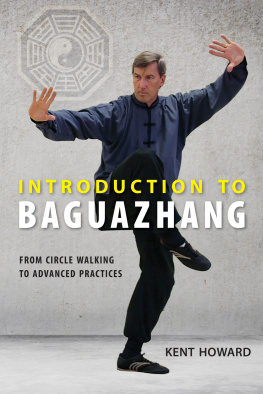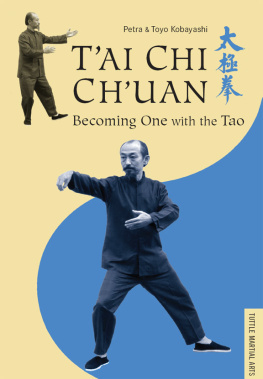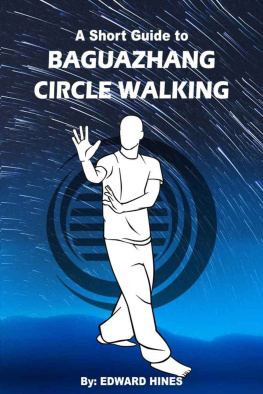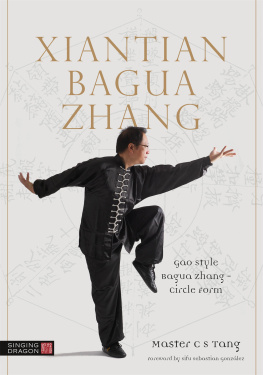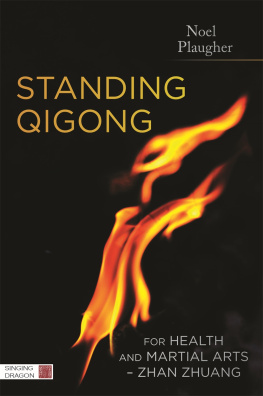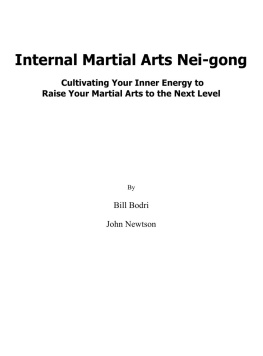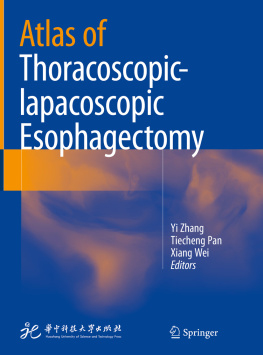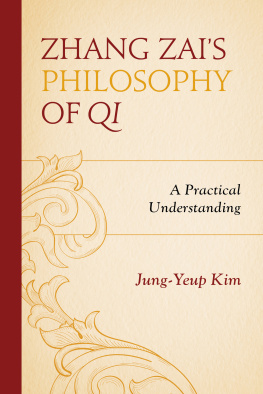
Copyright 2021 by Kent Howard. All rights reserved. No portion of this book, except for brief review, may be reproduced, stored in a retrieval system, or transmitted in any form or by any meanselectronic, mechanical, photocopying, recording, or otherwisewithout written permission of the publisher. For information contact Blue Snake Books c/o North Atlantic Books.
Published by Blue Snake Books, an imprint of North Atlantic Books
Berkeley, California
Cover photo by Scott Hamm
Interior photos by Jeff Silverman
Book design by Happenstance Type-O-Rama
Excerpts from Bagua Swimming Body Palms by Wang Shujin, translated and with commentary by Kent Howard and Chen Hsiao-Yen, published by North Atlantic Books, copyright 2011 by Kent Howard. Reprinted by permission of North Atlantic Books.
Introduction to Baguazhang: From Circle Walking to Advanced Practices is sponsored and published by North Atlantic Books, an educational nonprofit based in Berkeley, California, that collaborates with partners to develop cross-cultural perspectives, nurture holistic views of art, science, the humanities, and healing, and seed personal and global transformation by publishing work on the relationship of body, spirit, and nature.
North Atlantic Books publications are distributed to the US trade and internationally by Penguin Random House Publishers Services. For further information, visit our website at www.northatlanticbooks.com.
PLEASE NOTE: The creators and publishers of this book disclaim any liabilities for loss in connection with following any of the practices, exercises, and advice contained herein. To reduce the chance of injury or any other harm, the reader should consult a professional before undertaking this or any other martial arts, movement, meditative arts, health, or exercise program. The instructions and advice printed in this book are not in any way intended as a substitute for medical, mental, or emotional counseling with a licensed physician or healthcare provider.
Library of Congress Cataloging-in-Publication Data
Names: Howard, Kent, 1950 author.
Title: Introduction to baguazhang : from circle walking to advanced
practices / Kent Howard.
Other titles: Introduction to bagua zhang
Description: Berkeley, California : Blue Snake Books, [2021] | Includes
bibliographical references. | Summary: Lays out the principles,
practices, and underlying philosophy of the Chinese internal martial
art, Bagua Zhang. Presents the basics of the art in a way that is
accessible to beginners, yet allows more advanced students to gain new
insights as well Provided by publisher.
Identifiers: LCCN 2020052901 (print) | LCCN 2020052902 (ebook) | ISBN
9781623171049 (paperback) | ISBN 9781623171056 (epub)
Subjects: LCSH: Martial artsChina. | Hand-to-hand fighting, Oriental. |
Self-defense.
Classification: LCC GV1100.7.A2 H69 2021 (print) | LCC GV1100.7.A2
(ebook) | DDC 796.80951dc23
LC record available at https://lccn.loc.gov/2020052901
LC ebook record available at https://lccn.loc.gov/2020052902
Introduction
T aijiquan, or Tai Chi, as it is called, has found a nice niche in the cultural milieu of America and the world. When you mention Tai Chi, most people have some idea of what it is, no matter how wrongheaded that may be. Although it hasnt reached the same level of familiarity and acceptance as yoga, Tai Chi is on its way to becoming a standard exercise modality taught in health clubs, community centers, and specialty schools around the country.
Baguazhang (bah-GWAH-jong, or simply Bagua), rendered in English as eight diagrams style or eight trigrams style, is still somewhat of an unknown quantity in the Western world, and the United States in particular. The only people who have an inkling of what Bagua is are those who have taken the time to study it, or perhaps some of those ubiquitous Tai Chi practitioners. That is a good and bad thing.
The good thing is that Baguazhang has not been as misunderstood, as misrepresented, or as mispronounced as Tai Chi (TIE-gee to be correct). For nothing is worse than telling someone that you practice a certain discipline only to have them say, Oh, yeah! Taichee. Ive heard about that. Its like a new age meditation thing, right?
The bad part is that you need to explain what you practice to almost everyone: Well, its a sister style of Tai Chi, but, of course, its very different Also, placing a short ad for Baguazhang classes on the internet becomes an exercise in frustrationeven the name stretches the bounds of brevity.
Since you are reading this, however, I will assume that you (1) are curious about what Baguazhang is, (2) have an interest in learning, or (3) are already a practitioner. In that case, you are in luck on all three counts. This book will not only explain what Bagua is, and isnt, but it will also elaborate in great detail on the basic elements of practice. Even if you already practice the art, and have a thorough grounding in its principles, you will find a great deal of meat within, and not just the bare bones.
Just the Fundamentals, Maam!
Any book whose title contains the word introduction would appear, by definition, to be a text for beginners. However, this is hardly the case with the volume you hold in your hands. This is an introduction to the fundamentals of Baguazhang. Fundamentals, in the very essence of the word, are all the basic principles that must be understood, practiced, and eventually mastered to become proficient in a discipline. Does that mean advanced practitioners should be warned away? On the contrary, should you be a complete novice or a seasoned adept, the fundamental principles taught herein should both inform and illuminatealthough at differing levels, depending on your understanding and skills.
Baguazhang has sometimes been called the graduate school of Chinese martial arts. One old Chinese instructor of my acquaintance once described the three major internal martial arts in this manner: Xing-yiquan (shing-ee-chwan) is like high school; you learn the basics and prepare for advancement. Taijiquan (tie-gee-chwan) is like college; you reach for a higher degree of knowledge and subtlety. Baguazhang, however, is like graduate school, where all of your previous knowledge and study must be brought to bear in sorting out the complexities and demands that await you.
This is a somewhat prosaic and protracted simile, to be sure, but it aptly expresses the feelings that many people have toward Baguazhangs level of complexity and difficulty as a martial art.
So, if Baguazhang is that hard to learn, relegating other martial systems, by default, to mere prerequisites, why suggest novices learn it at all? The truth is, high-minded notions aside, Bagua isnt all that difficult as a martial art, if you have average physical dexterity and the proper mind-set. In that case, you may say, why warn students off in the very beginning? For one simple reason: the study of Baugua requires, at the outset, a level of dedication and passion that will keep you coming back to practice when all your senses tell you to quit.
Lets look at it from another angle. Attend any college Mandarin Chinese level-one class and you will find about forty students enrolled on the first day (as I did in college in the 1980s). On the last day of the semester, however, there will be around fifteen students left. Of those who pass the course, ten may enroll in Chinese II. Out of those students, five might be found in attendance for the now seminar class (due to lack of enrollment) for Chinese III. Indeed, the students remaining in the end are the die-hards: those who grow more interested as the subject becomes more difficult and demanding.
Next page
